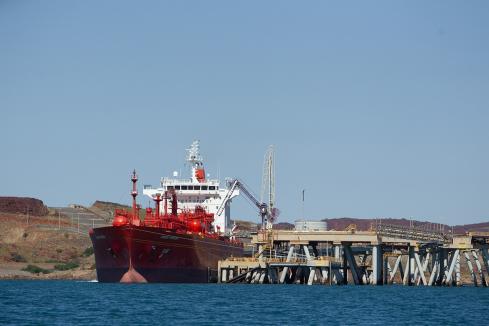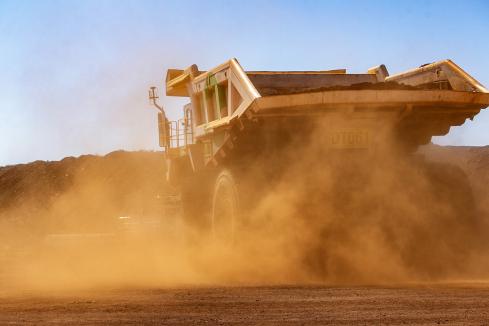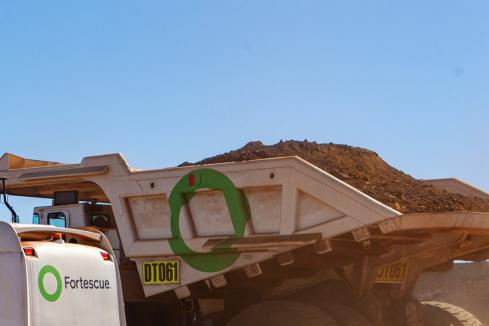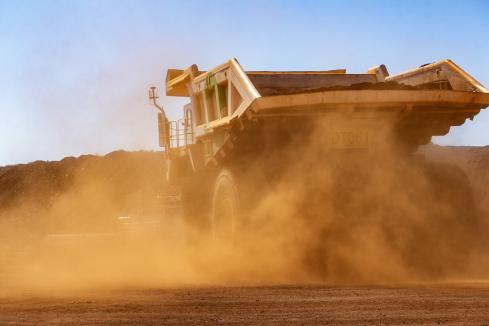The use of renewable energy in the mining sector is being given a boost, with the federal government and Alinta Energy jointly funding a $200 million solar facility that will help to power Fortescue Metals Group’s iron ore mines.


The use of renewable energy in the mining sector is being given a boost, with the federal government and Alinta Energy jointly funding a $200 million solar facility that will help to power Fortescue Metals Group’s iron ore mines.
Alinta is planning to build a 60-megawatt solar photovoltaic facility, along with a 60-kilometre transmission line that will link Fortescue’s Christmas Creek and Cloudbreak mines with the new solar farm.
The transmission lines will also connect the Fortescue mines and the Roy Hill mine to Alinta’s 145MW gas-fired power station (which is to be upgraded with new turbines) and 35MW battery storage system at the town of Newman.
The project is expected to create 200 jobs during construction and is due for completion in mid-2021.
The new infrastructure will allow up to 100 per cent of daytime energy requirements for the Fortescue mines to be powered by renewable energy, with the remaining power to be balanced with gas generation.
Fortescue has estimated that 100 million litres of diesel used each year at its existing mine site diesel generators will not be required.
Chief executive Elizabeth Gaines said the project was a first on this scale for the Pilbara and would reduce carbon emissions from stationary generation by around 40 per cent at the Christmas Creek and Cloudbreak mines, known as the Chichester hub.
“The agreement with Alinta Energy marks a significant milestone in Fortescue’s energy strategy and represents a further step in the creation of Fortescue’s Pilbara energy connect project,” she said.
In this regard, Ms Gaines said Fortescue plans to invest $US250 million ($A305 million) in energy transmission infrastructure to link its Chichester, Solomon and Iron Bridge mining operations.
Prior steps in this project include construction of the Fortescue River gas pipeline and conversion of the Solomon power station from diesel to gas.
Two federal government agencies will help fund the Alinta project.
The Northern Australia Infrastructure Facility will provide a loan of up to $90 million, while the Australian Renewable Energy Agency will provide a $24.2 million grant.
Alinta will provide the balance of about $86 million.
It will be the sixth project in northern Western Australia to attract NAIF funding.
Other beneficiaries have included mining companies Kalium Lakes, Sheffield Resources and Australian Aboriginal Mining Corporation.
ARENA chief executive Darren Miller said the project could unlock further investment in renewable energy in the mining sector and other remote operations.
“Alinta’s project will demonstrate how renewable energy solutions can deliver critical energy requirements for major mining operations and help reduce emissions,” he said.
“This will also show how interconnection of loads and different generation and storage - including solar, battery storage and gas - can provide secure and reliable electricity.”
ARENA has funded a range of renewable energy projects in the mining sector, including AER’s Port Gregory wind farm that will power a garnet mine, and solar hybrid projects at Gold Fields and Agnew gold mines.
Alinta Energy managing director Jeff Dimery said the project would give the region a better chance of displacing diesel generation with a cleaner, affordable, and more connected energy supply in the future.
“By extending transmission lines in the Pilbara, displacing diesel, and backing solar up with gas-fired generation and our innovative big battery at the Newman power station, we will deliver a cleaner, affordable and more connected supply to our customers,” Mr Dimery said.
“Working together, we are on the cusp of demonstrating that renewables can drive Australia’s economic powerhouses forward – even for remote and complex industrial applications.”
















